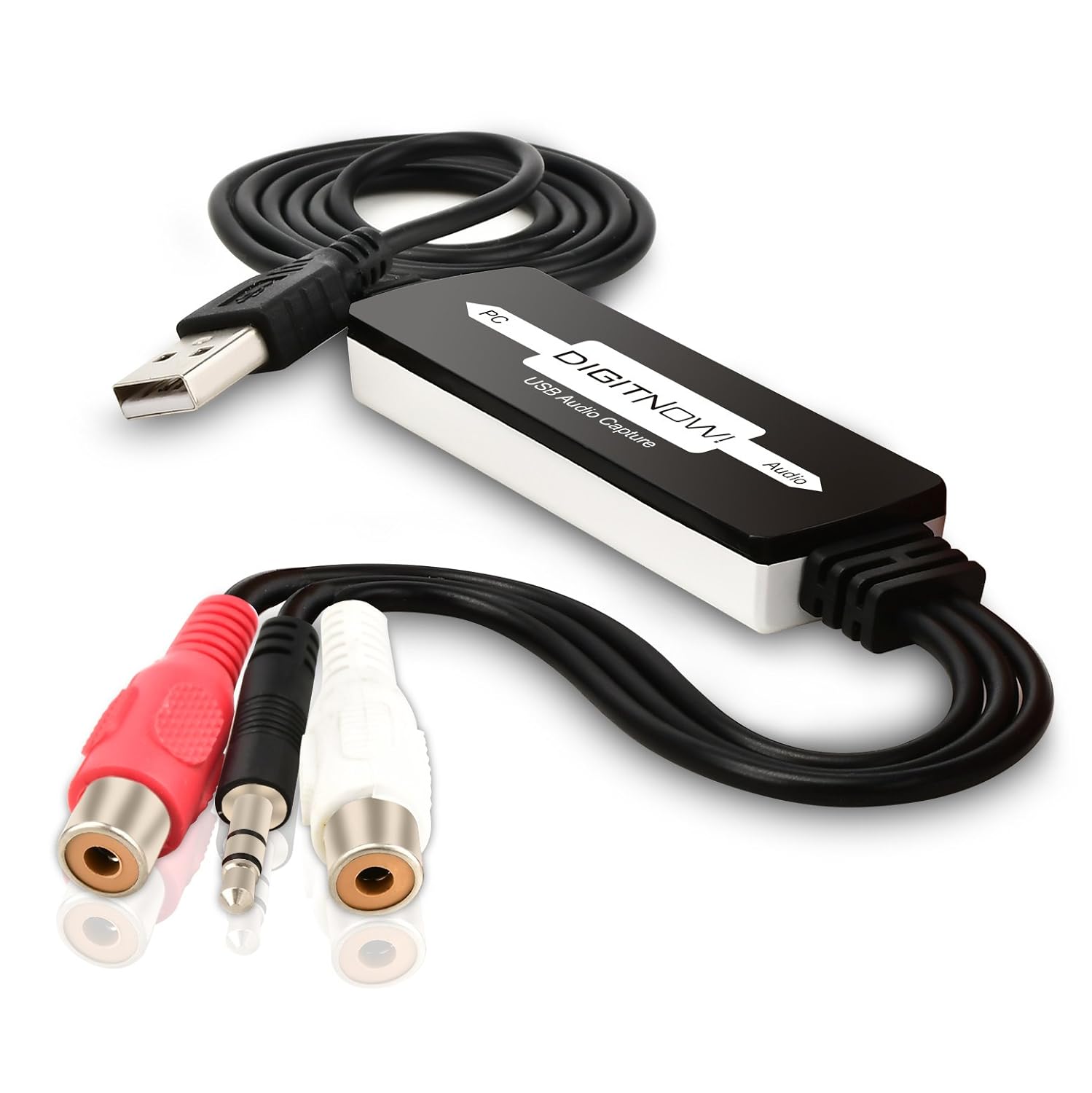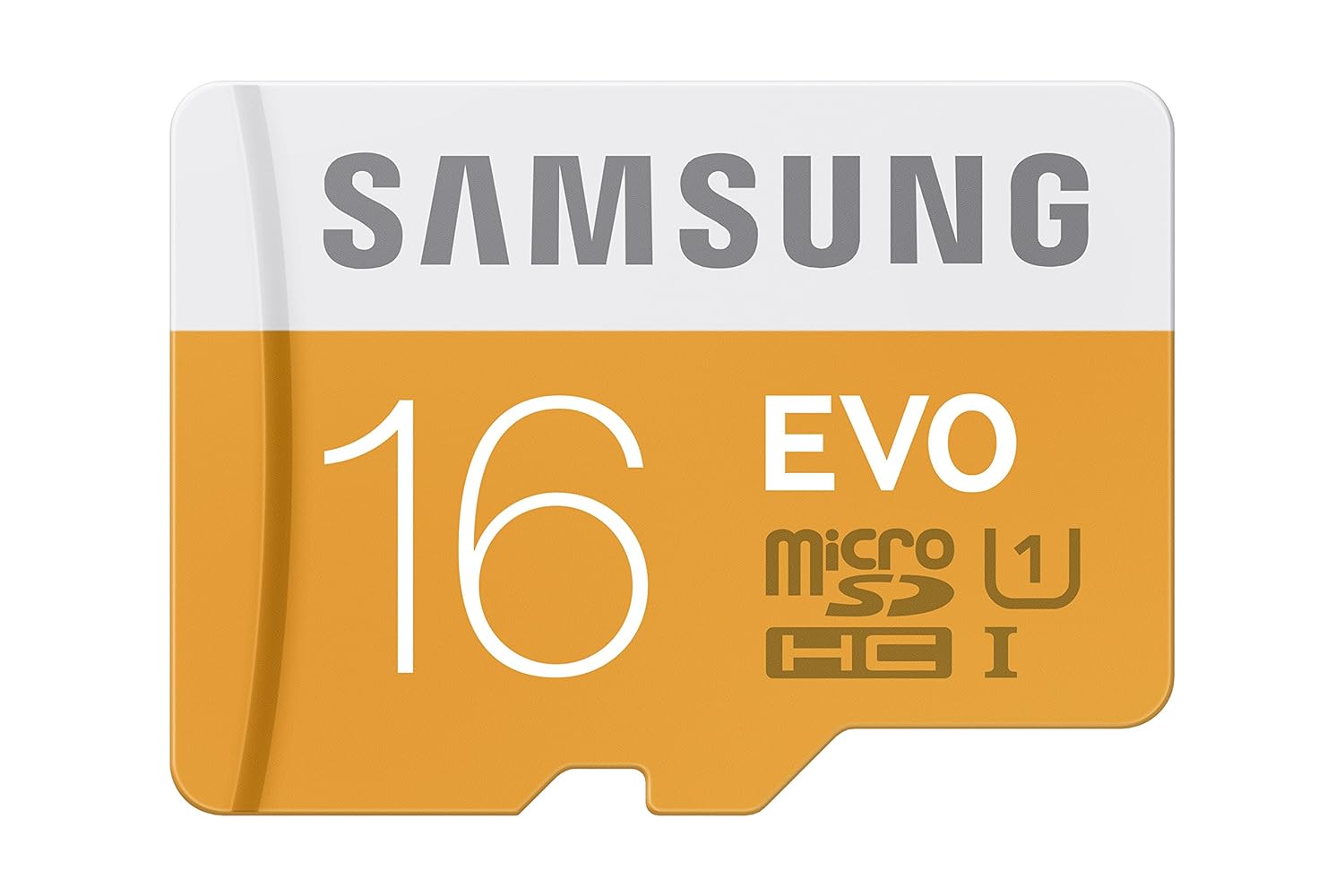; Date: Fri May 22 2020
Tags: Public Health »»»» Ultraviolet Light »»»» UV-C »»»» COVID-19 »»»» Coronavirus »»»»
As of this writing the world in the grips of a Pandemic, the COVID-19 pandemic caused by the SARS-COV-2 virus that is killing people around the world. This disease easily spreads, especially in areas where there is a high density of people in close quarters. This makes public spaces in large cities a potential danger zone. The mass transit systems we need to decrease traffic congestion are potential vectors for spreading not just the COVID-19 virus, but any other pathogen. An infected person could easily get on a bus, cough a lot, wipe some mucous on a seat-back, etc, leaving behind infectious pathogens that will be picked up by the next person to sit in that seat. What if there were an easy and inexpensive way to disinfect public spaces to reduce this risk?
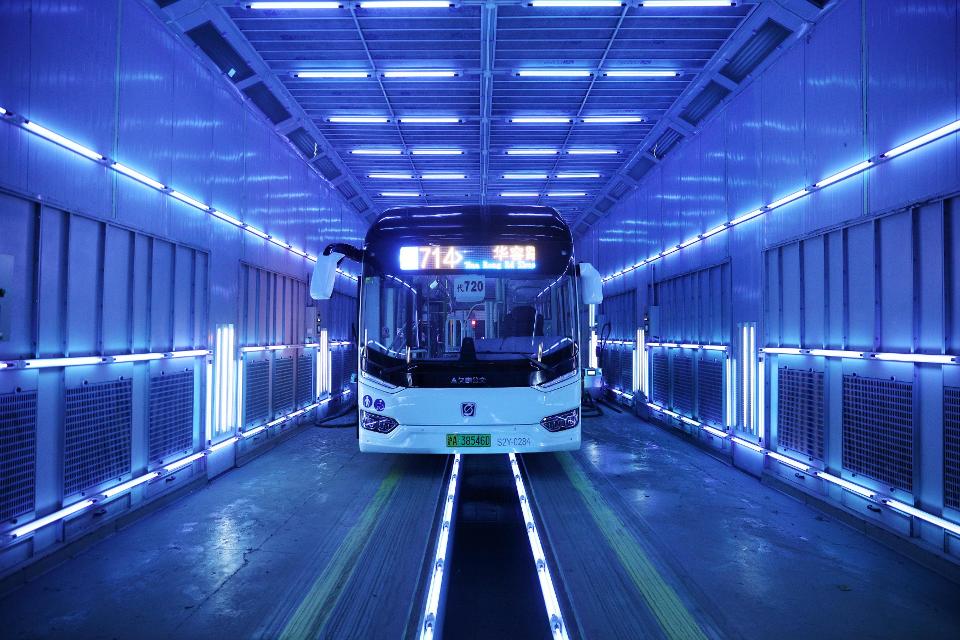
It's well understood that the virus behind the COVID-19 pandemic spreads easily, in the air, on surfaces, etc. Because of this we're being told to shelter in place meaning to stay at home, because there is less risk of infection and spreading the disease. Put another way, public spaces are a danger because of infectious pathogens that can be left behind by infected people.
For example, this image shows an identified spread of COVID-19 in a restaurant in China:
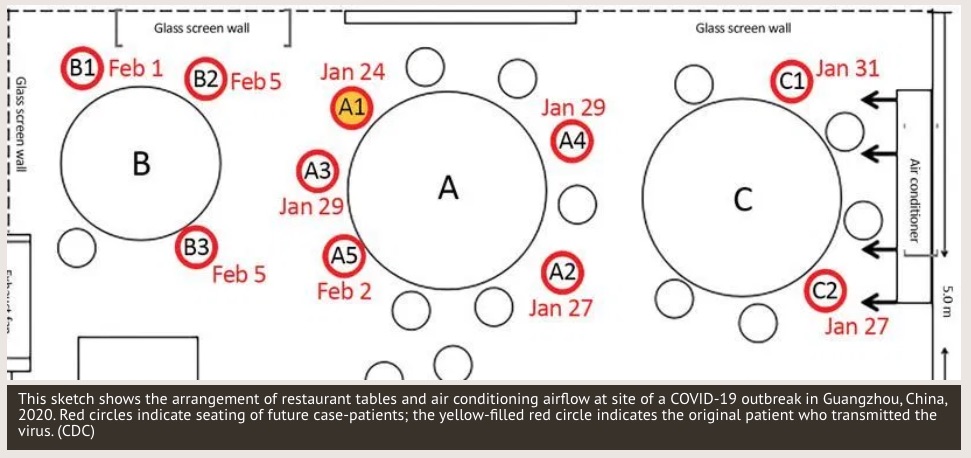
As the caption from the
source says, an infected person in a given restaurant restaurant spread the disease to 9 other people.
This same sort of spread can occur in any public space. The nature of this specific illness lends itself to easy spread like this, but surely there are other diseases for which this happens. For example, how many people catch seasonal flu just by being near someone who is sick?
The COVID-19 disease clusters in prisons, meat-packing and other factories, warehouses, nursing homes, and other places, all demonstrate that public spaces can enable the spread of such diseases. Rather than humanity being forced to stay home and avoid public spaces, humanity should instead learn how to disinfect public spaces. It is natural for humans to congregate and be with others, therefore it is necessary for humanity to develop methods for doing that safely.
The attached video talks mainly about hospitals and the use of ultraviolet lights in the UV-C spectrum to disinfect places. But it also talks about the potential for UV-C lights to be widely used in all public spaces, so that public spaces are routinely disinfected. There is even talk about so-called "Far UV-C" lights that operate in a frequency range that kills pathogens without risk to humans. A possible result is that every public space will have such lights shining constantly, next to the existing lighting systems, so that all public spaces are disinfected.
Ultraviolet germicidal irradiation in hospitals and other spaces
There is a long-standing understanding that many people entering a hospital become infected by diseases in the hospital. Therefore, hospitals have for decades used various disinfecting technologies, including powerful cleaning chemicals, and ultraviolet lights.
The problem with the powerful chemicals is their toxicity. The hope with ultraviolet light is to use simple mild soap and water to clean spaces, and then use ultraviolet light to destroy pathogens.
The video names off a number of companies and products, and it's all very interesting. Especially interesting is the shorter wavelength UV-C light discussed at the end which does not harm human skin while still killing pathogens.
The ultraviolet spectrum
To understand what they're talking about, let's go over the ultraviolet spectrum.
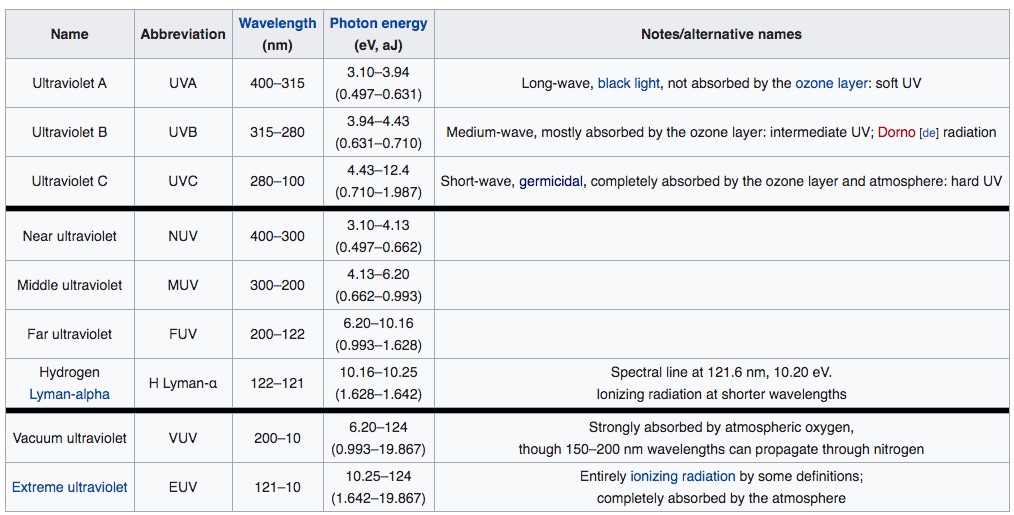
The natural sunlight we see outside during the daytime has a lot of UV-A and a smaller amount of UV-B light. All biological life on the planet therefore evolved to be able to use UV-A and UV-B light.
For example human bodies naturally produce Vitamin D by exposure to UV-B light.
UV-C light, however, is harmful to skin. Its disinfecting properties is because it readily destroys DNA and RNA in pathogens. But of course that means it will also do so to human skin, and it is known to cause severe problems in eyes that directly see UV-C light.
This means every use of UV-C light is with strong safeguards. For example in the B-Roll clips of the attached video, you see an operator turn on a machine then quickly exit the room. Every time the UV-C light machines are shown in use, the operator is either wearing protective gear, or else nobody is in the room.
For example -- Dimer has a product called the Germ Falcon:
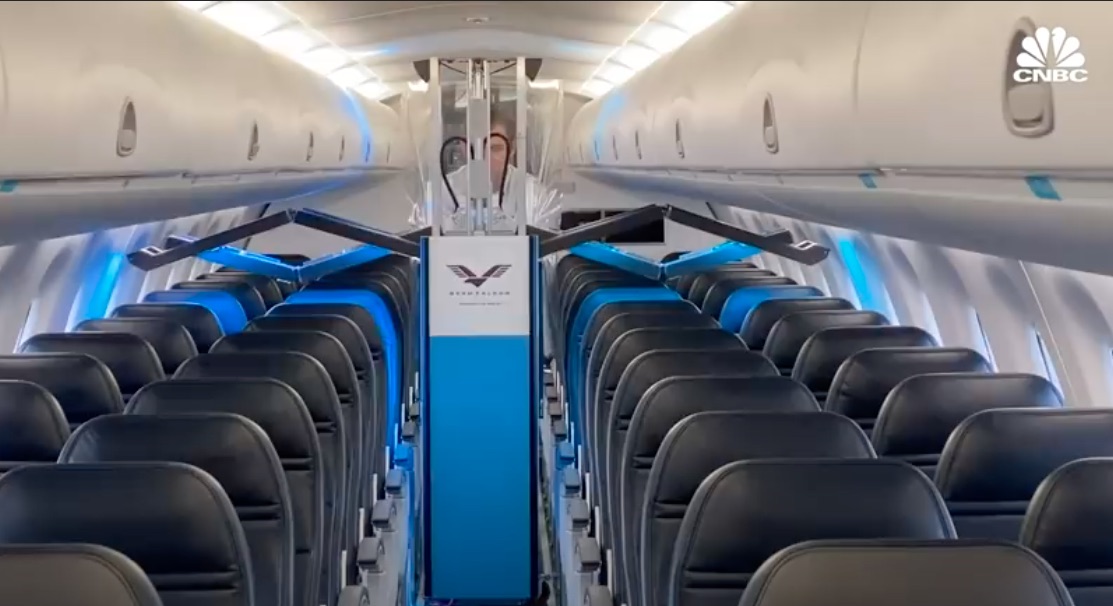
This is a device the size of a drink cart meant for use on commercial passenger airplanes. An operator wheels it down the aisle, and there are arms that go in the space between the seat tops and the bottom of the cargo boxes.
This can potentially disinfect airplanes and is possibly fast enough to be used between flights, ensuring that an airplane does not serve to spread COVID-19 virus.
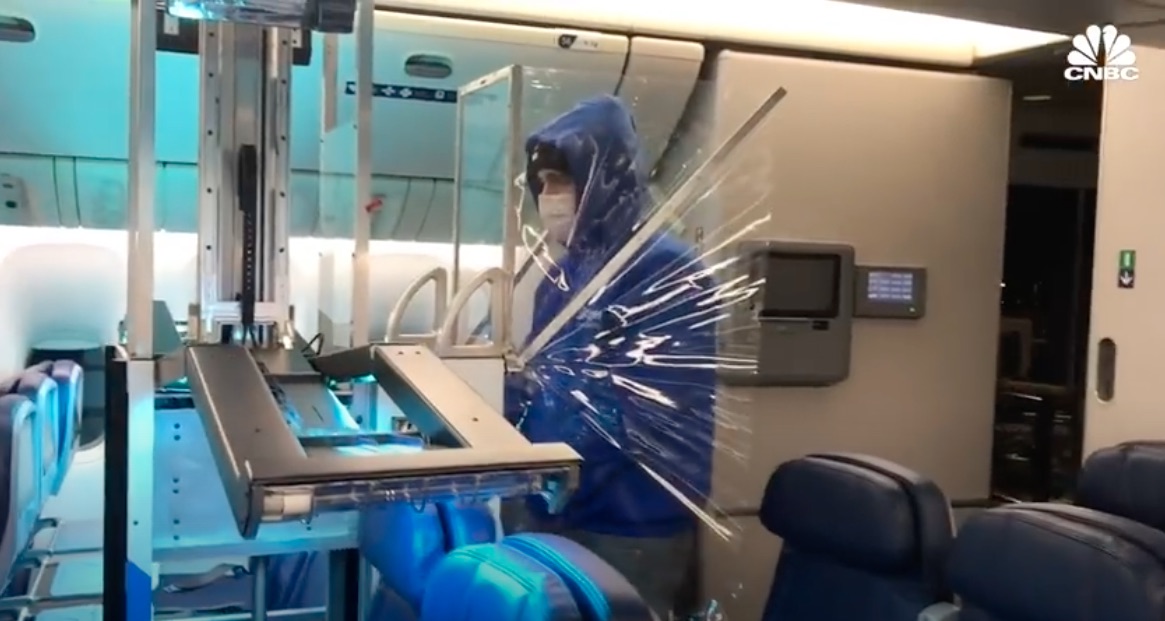
Notice that the operator of the device is behind a plastic shield, and is wearing a jacket and face mask leaving very little exposed skin.
Not only is the operator being protected against exposure to pathogens in the airplane, but the plastic shield is enough to block UV-C light.
It is claimed to kill 99% of germs in 3 minutes and it takes 30-45 minutes to clean an entire wide body airplane.
Airlines are concerned about the turnaround time - the time required to prepare an airplane its next flight. Do any of us have correct visibility into how airlines prepare an airplane between flights?
In an airlines rush to get an airplane back in the air, have the airlines been cutting corners and doing a sloppy job? Have we already been exposed to illnesses for years when flying an airplane?
The public health risk of pathogens in public spaces
The same questions hold true of any public space like a shopping mall or restaurant.
The operators of such public spaces want high utilization since that's how they earn the most money. But... in the rush to grab more revenue, have they followed good public health safety practices?
In part the COVID-19 pandemic may be seen as a worldwide failing of public health safety, perhaps?
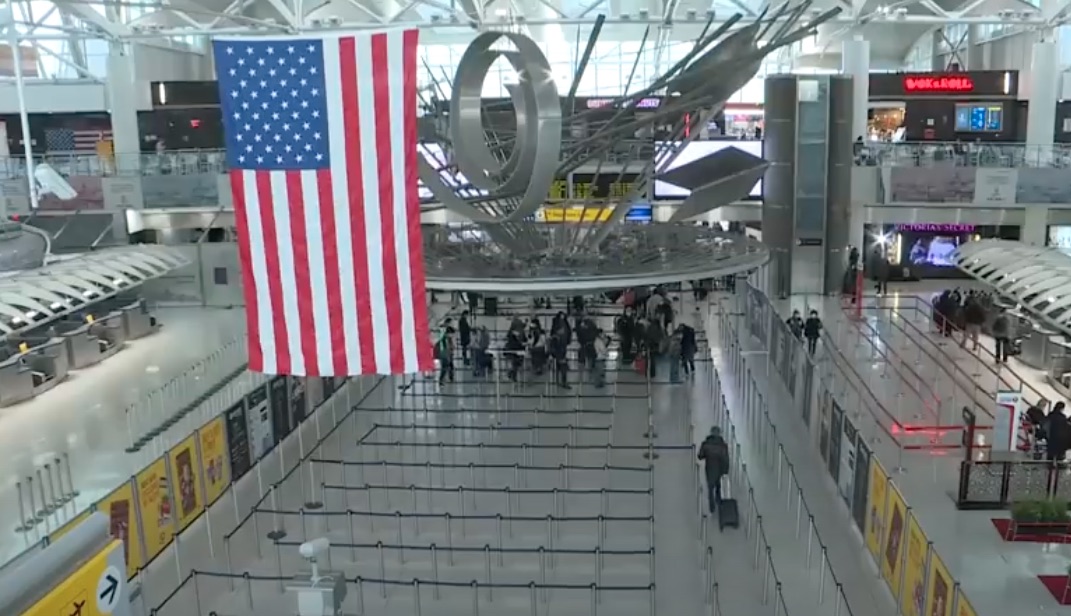
Often this sort of space is jammed with people, and the space is designed to hold the largest number of people in the space. The design is enforced by the shape of the guide-ropes forming the serpentine paths we follow while waiting to be screened by the customs agents. But that puts us in close proximity to one another, and could leave behind pathogens breathed out by any infected persons.
What if, between airplanes, a UV-C robot sweeps through the area to disinfect everything?
Constant exposure to 222nm Far UV-C light is the solution?
The video ends with a newer development. There is a frequency of UV-C light, near 222 nm wavelength, that still has the disinfecting properties, but does not harm human skin.
Far UV-C lights are in testing now .. the video talks about animal testing, where long term exposure with hairless mice does not show any impact on the mice.
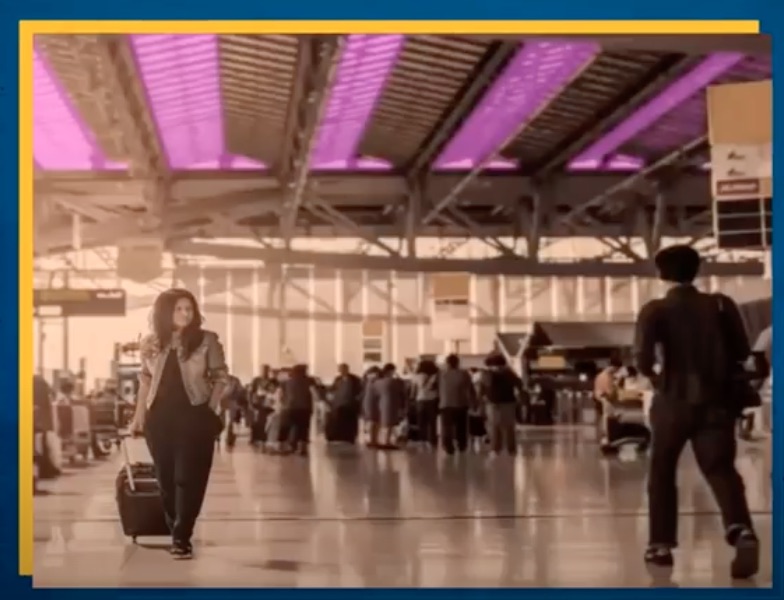
This is what the CNBC report offers as the glowing vision for the future. That public spaces will have Far UV-C lights on all the time, alongside regular lights, so that all public spaces are routinely disinfected from harmful pathogens.
One wonders which is safer ... disinfection with no humans present using the devices we already know about ... or constant exposure to UV-C light in frequencies that are supposed to be safe?



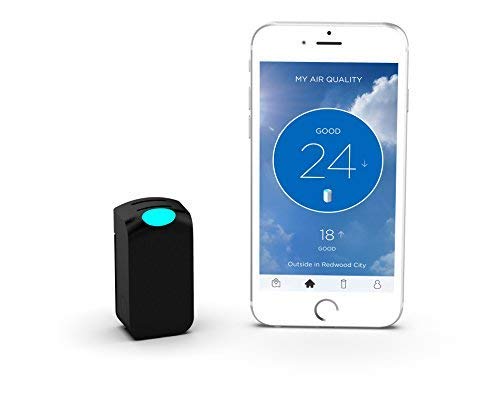
![Anker [4-Pack] PowerLine Micro USB (1ft) - Charging Cable for Samsung, Nexus, LG, Android Smartphones and More (Black) Anker [4-Pack] PowerLine Micro USB (1ft) - Charging Cable for Samsung, Nexus, LG, Android Smartphones and More (Black)](../../../___dlassets/images-na_ssl-images-amazon_com/5jPEfq2nmYs2Ey5GzjrYV5YbSadN1R7wbZsV7bYzrje8YUFD.jpeg)
